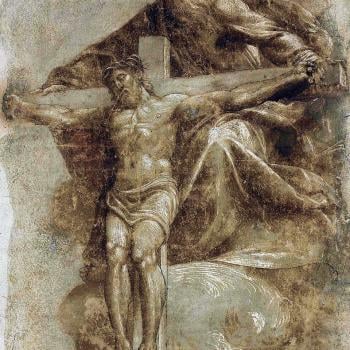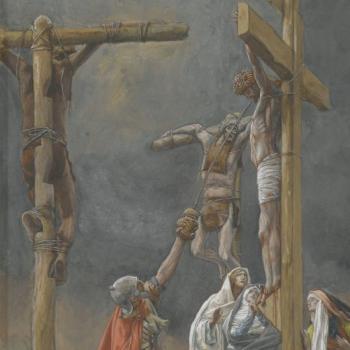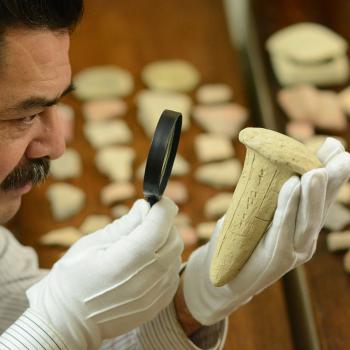
I have been thinking quite a bit about secure attachments these days. My wife Mariko and I regularly visit our adult son Christopher at his rehabilitative care facility. In fact, she visited him last night, the eve of Mother’s Day.
For those of you who don’t know, Christopher is minimally conscious after enduring a traumatic brain injury in January 2021. It touches my heart when my wife shares with me after her visits how Christopher responds to her presence when he is conscious. Sometimes he will smile and show his teeth. At other times, his face will warm up with a soft glow. He will even smile when his mom tells him she’s going to return home. In response, she teases him, “Are you happy I’m leaving now?!” Last week, my wife said to Christopher, “Until you can come see us, I will come see you.” I’m not sure how alert or cognizant Christopher was when his mom shared that assuring word with him, but there’s no denying the special bond between them.
Their special bond was on my mind during Holy Week, when Mariko and I visited “The Grotto.” The Grotto is a forested Roman Catholic sanctuary with botanical gardens in Portland, Oregon. It was rather chilly that day, so we did our best to stay in the sun as much as possible as we walked along the paths of the gardens on the second level. We reminisced about Christopher and faith as we took in the scenery. At the end of our brief pilgrimage, we went inside the chapel that is perched on the cliff of Rocky Butte.
The chapel’s north side is all glass and provides a scenic view of the Columbia River Valley and Cascade Mountain Range. A replica of Michelangelo’s Pietà faces the viewers, as they gaze out the large window. Jesus’ mother Mary holds the crucified body of her son Jesus in her lap for all visitors to behold. The picture of the statue and the scenic view out the window accompanies this post.
The bronze symbol of Mary’s love for her son radiated a soft glow and comforted us as we gazed out the window to take in the panoramic view. The secure attachment between Mary and Jesus amid excruciating and unimaginable suffering and sorrow provided a much-needed reminder that God is with the world amid profound suffering. I don’t have any idea how many people were cognizant of this truth in the homes scattered across the Columbia River Valley, in the airplanes arriving and departing from Portland International Airport situated on the river, and in the vehicles going north and south across the Columbia on the I-205 highway below the window. Still, in my mind, there’s no denying the special bond or secure attachment between Mary and Jesus or “God with us, Immanuel” (Matthew 1:23).
The American Psychological Association provides the following definition of “secure attachment.” The definition also accounts for Mary D. Salter Ainsworth’s experimental technique called the “Strange Situation”:
in the Strange Situation, the positive parent–child relationship, in which the child displays confidence when the parent is present, shows mild distress when the parent leaves, and quickly reestablishes contact when the parent returns.
an adult attachment style that combines a positive internal working model of attachment of oneself, characterized by a view of oneself as worthy of love, and a positive internal working model of attachment of others, characterized by the view that others are generally accepting and responsive.
Where do I see secure attachment in the Bible? While Jesus showed extreme rather than mild distress in crying out that his Heavenly Father had abandoned him on the cross (Matthew 27:46), they quickly reestablish contact as shown in the resurrection narratives (Matthew 28:18-20; John 20:17). As for Jesus’ relationship with his mother, he considers Mary’s wellbeing and entrusts her to his disciple John to care for her after his death, even while hanging on the cross, (John 19:25-27). For her part, Mary is with Jesus to the end. Their secure attachment speaks to me amid our family’s own form of excruciating and unimaginable suffering.
Still, I must be honest with you. Sometimes Jesus said things to and about his mom that won’t make it onto a Mother’s Day Hallmark card, at least not one that my wife would like. For example, my wife has often struggled with Jesus’ words to his mother at the wedding in Cana of Galilee. Here’s his response, when Mary asked him to come to the rescue after the wine ran out: “‘Woman, why do you involve me?’ Jesus replied. ‘My hour has not yet come’” (John 2:4; NIV). Nor has my wife appreciated my use of this verse when she asks me to take out the garbage: “Dear woman, why do you involve me? My hour has not yet come.” It doesn’t help when I add that I’m just trying to be biblical!
Joking aside, there’s nothing to laugh about when considering the depth of connection between Jesus and Mary, Mariko and Christopher, or Christopher’s wife Keyonna and their daughter Jaylah. In each situation, I see evidence of secure attachment. The bond between parent and child in each setting emits a soft, warm glow this wet and chilly Mother’s Day morning. Mariko and Christopher, Keyonna and Jaylah, have been through a lot since January 2021 as mothers and children. But amid the sorrow, I take comfort from their secure attachment.
I also take comfort from pondering that bronze replica of Michelangelo’s Pietà that overlooks the Columbia River Valley. No matter how secure or insecure our attachments to our parents and family members are, Mary and Jesus symbolize that God is with us, even when we are minimally conscious or unaware of this truth. Mary holding Jesus on her lap this Mother’s Day on the Grotto’s rocky cliff signifies secure attachment amid relentless suffering and strange situations in our world today.
To read the various posts about our family’s journey with TBI, please go to this link. Thank you for your prayers!












